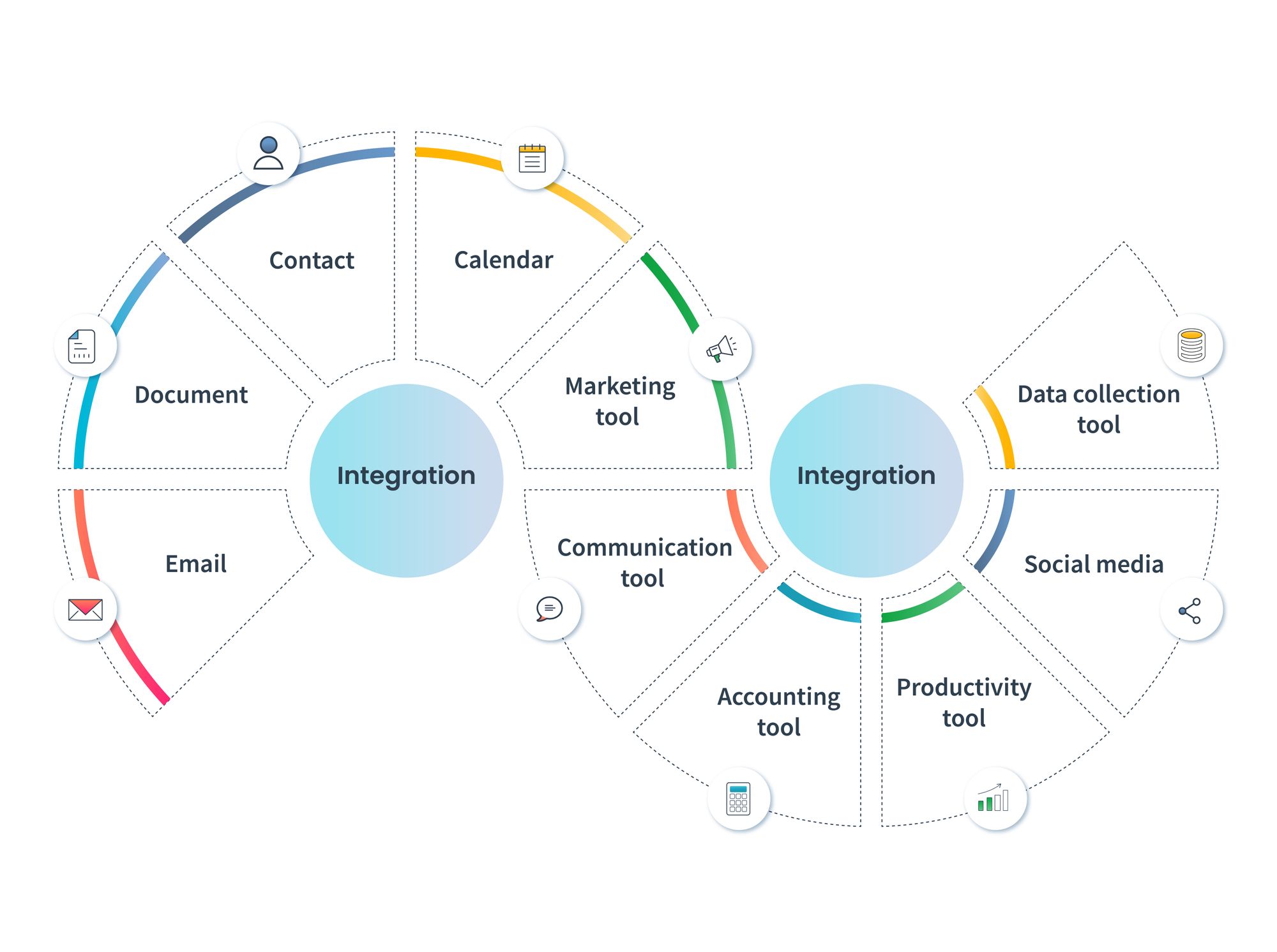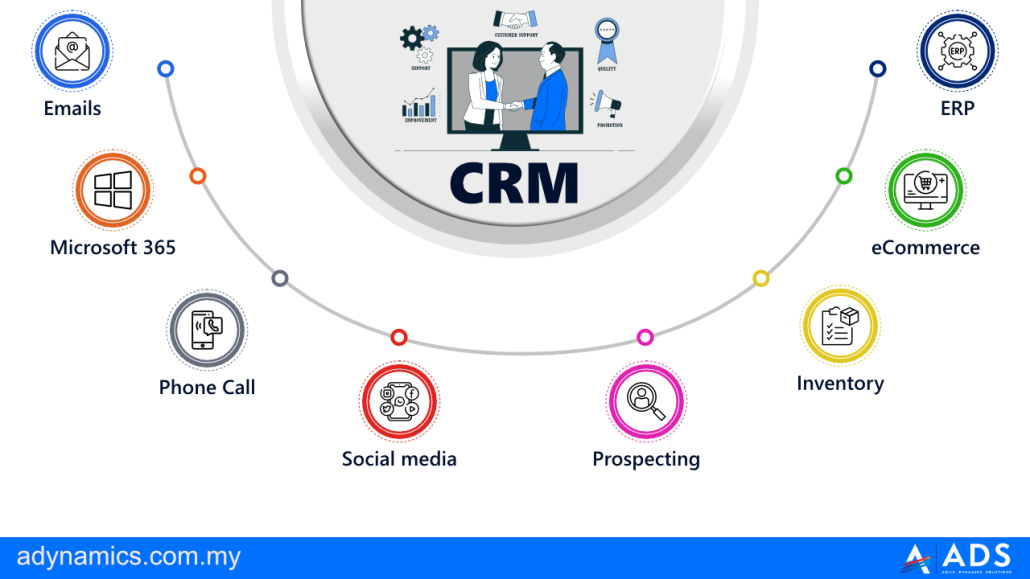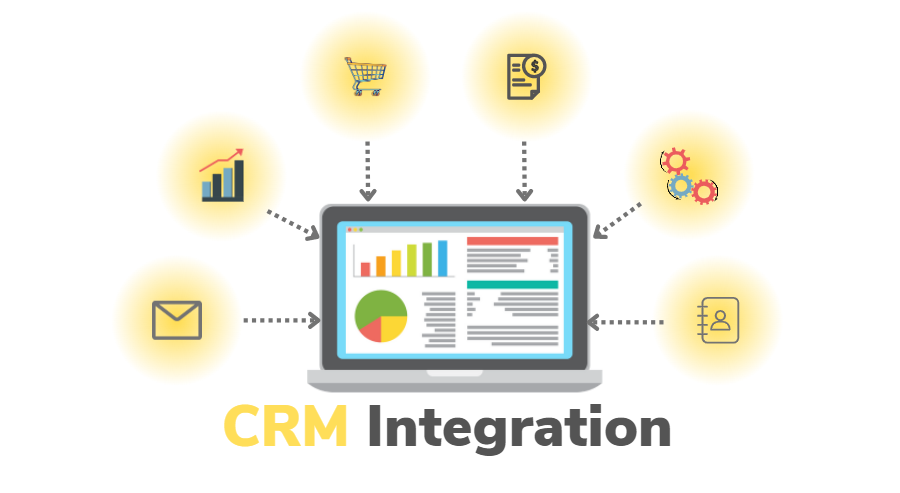Exploring the World of CRM Integration
Delving into CRM integration, this introduction immerses readers in a unique and compelling narrative. It explores the significance of CRM integration for businesses and how it can revolutionize their operations by seamlessly connecting various tools and platforms.
As we journey through the different types of CRM integrations, challenges faced, and effective strategies, readers will gain a comprehensive understanding of this crucial aspect of modern business operations.
Overview of CRM Integration
CRM integration refers to the process of connecting a Customer Relationship Management system with other tools or platforms to streamline business operations and improve efficiency. This integration allows for seamless data sharing and communication between different systems, enhancing the overall customer experience and increasing productivity.
Popular CRM Systems with Integration Capabilities
- Salesforce: A widely used CRM system that offers robust integration options with various third-party applications and tools.
- HubSpot CRM: Known for its user-friendly interface and extensive integration capabilities, allowing businesses to connect their CRM with email marketing, social media, and more.
- Zoho CRM: Another popular choice that provides integration with a wide range of business applications, such as accounting software and project management tools.
Benefits of CRM Integration
- Improved Data Accuracy: Integrating CRM systems with other platforms reduces manual data entry errors and ensures that information is consistent across all systems.
- Enhanced Customer Insights: By integrating CRM with marketing automation tools or analytics platforms, businesses can gain deeper insights into customer behavior and preferences.
- Increased Efficiency: Automation features enabled by CRM integration help streamline workflows and eliminate repetitive tasks, allowing teams to focus on more strategic activities.
- Better Communication: Integration enables seamless communication between sales, marketing, and customer service teams, leading to a more coordinated and cohesive customer experience.
Types of CRM Integrations

When it comes to integrating CRM systems with other tools or platforms, there are several types of integrations that businesses can leverage to enhance their operations and customer relationships.
API Integrations
API integrations involve using application programming interfaces to connect CRM systems with other software applications or platforms. This type of integration allows for seamless data exchange and automation of processes. For example, a company can integrate its CRM system with an email marketing platform using APIs to synchronize customer data and communication efforts.
Third-Party App Integrations
Third-party app integrations involve connecting CRM systems with external applications or services developed by third-party providers. Businesses benefit from these integrations by expanding the functionality of their CRM systems with tools such as lead generation, social media management, or project management.
For instance, a real estate agency can integrate its CRM system with a property listing service to streamline lead management and client communication.
Custom Integrations
Custom integrations are tailored solutions developed to connect a CRM system with specific internal systems or processes unique to a business. These integrations are designed to meet the specific needs and requirements of an organization, allowing for a high level of customization and control.
An example could be a healthcare provider integrating its CRM system with its electronic health record (EHR) system to ensure seamless patient data management and communication.
Comparison: Native CRM Integrations vs. Third-Party Integrations
Native CRM integrations are built-in connections offered by CRM vendors to popular applications or services, providing seamless and secure data exchange. On the other hand, third-party integrations offer a wide range of specialized tools and services that can enhance the functionality of CRM systems beyond what native integrations provide.
While native integrations may offer basic connectivity with essential tools, third-party integrations can offer more advanced features and capabilities tailored to specific business needs.
Challenges and Solutions in CRM Integration
Integrating CRM systems can present various challenges that organizations need to address effectively to ensure a smooth and successful integration process. These challenges often involve technical complexities, data migration issues, and ensuring data security and privacy.
Common Challenges Faced During CRM Integration Projects
When integrating CRM systems, organizations may encounter the following common challenges:
- Lack of compatibility between different CRM platforms
- Data inconsistencies and duplication during migration
- Resistance from employees to adopt new systems
- Integration complexity leading to delays and cost overruns
Best Practices to Overcome Integration Challenges
To overcome these challenges, organizations can implement the following best practices:
- Conduct a thorough assessment of CRM systems and data before integration
- Ensure clear communication and training for employees on the benefits of the new system
- Utilize middleware solutions to facilitate data mapping and integration
- Regularly monitor and test the integration process to identify and address issues promptly
Role of Data Security and Privacy in CRM Integration Processes
Data security and privacy are critical aspects of CRM integration processes to protect sensitive customer information. Organizations must:
- Implement encryption and access controls to safeguard data during integration
- Comply with data privacy regulations such as GDPR and CCPA
- Regularly audit and update security measures to prevent data breaches
CRM Integration Strategies

Successful CRM integrations require careful planning and execution to ensure alignment with business goals and objectives. Here are some key strategies to consider:
Step-by-Step Processes for Successful CRM Integrations
- Define clear objectives and goals for the integration process.
- Assess the current state of your CRM system and data to identify areas for improvement.
- Select the right integration tools or platforms that align with your business needs.
- Create a detailed implementation plan with clear timelines and responsibilities.
- Test the integration thoroughly before full deployment to ensure smooth functionality.
- Provide training and support for employees to adapt to the new integrated system.
Aligning CRM Integration Strategies with Business Goals and Objectives
- Ensure that the integration aligns with your overall business strategy and objectives.
- Focus on improving customer experience, data accuracy, and operational efficiency through integration.
- Monitor key performance indicators (KPIs) to track the success of the integration in meeting business goals.
- Regularly review and adjust integration strategies to align with evolving business needs.
Tips for Selecting the Right Integration Tools or Platforms for CRM Systems
- Consider the scalability and flexibility of the integration tools to accommodate future growth.
- Evaluate the security features of the platforms to ensure the protection of sensitive customer data.
- Look for integration tools that offer seamless connectivity with other business systems and applications.
- Seek feedback from other businesses or industry experts on their experiences with different integration tools.
Wrap-Up

In conclusion, CRM integration is not just a technological advancement but a strategic move that can propel businesses to new heights of efficiency and customer satisfaction. By implementing the right integration strategies and overcoming challenges, companies can harness the full potential of their CRM systems and drive growth in today's competitive landscape.
Answers to Common Questions
What are the key benefits of CRM integration?
CRM integration enhances data accessibility, streamlines processes, improves customer interactions, and boosts overall business productivity.
How can businesses ensure successful CRM integration?
By aligning integration strategies with business goals, investing in the right tools, and addressing data security and privacy concerns effectively.
What are some common challenges in CRM integration projects?
Common challenges include data migration issues, compatibility issues with existing systems, and ensuring seamless communication between different platforms.